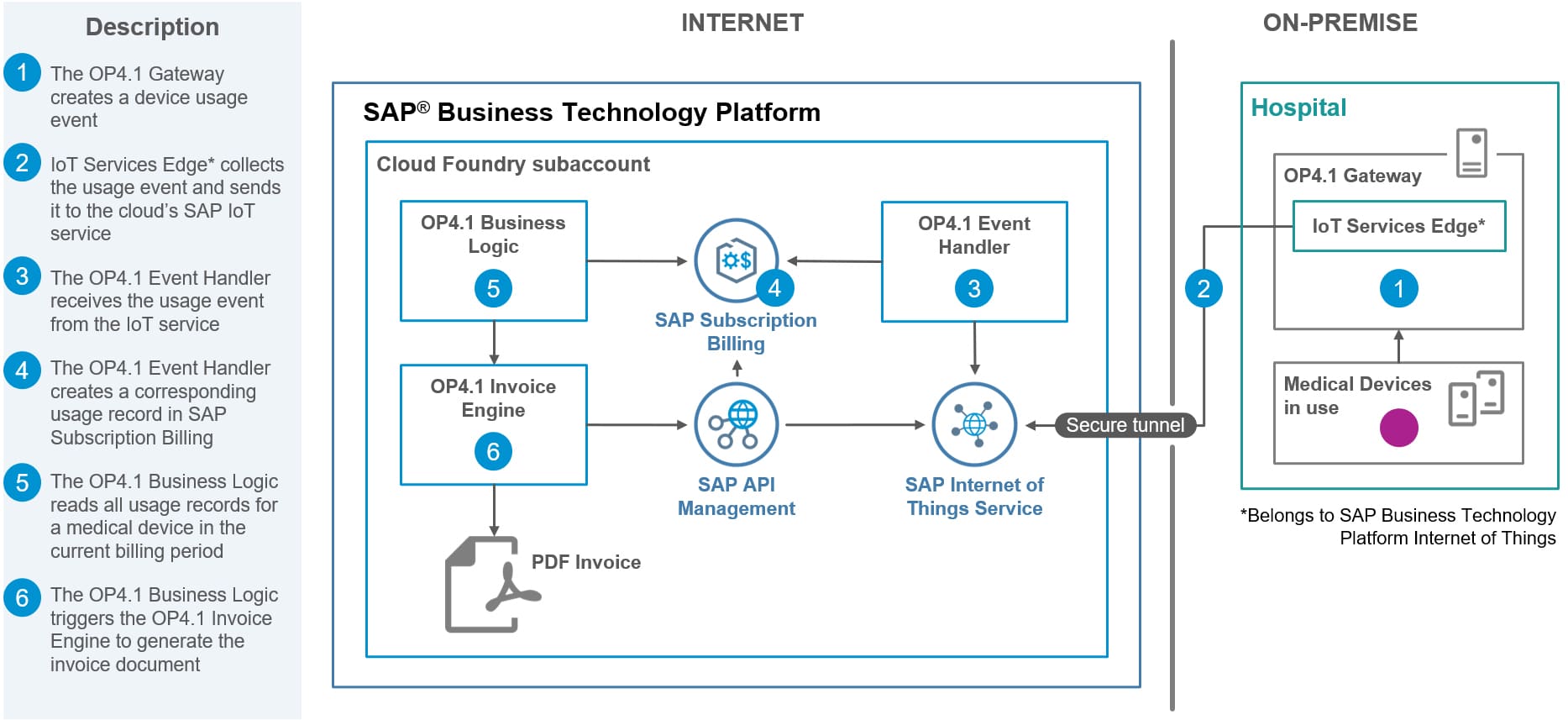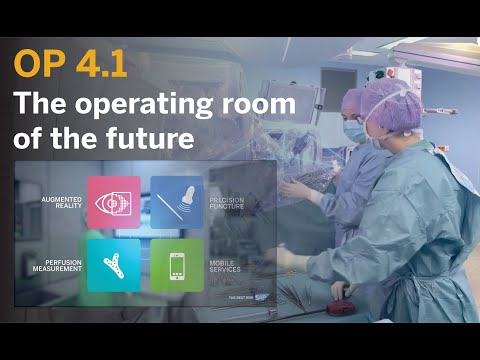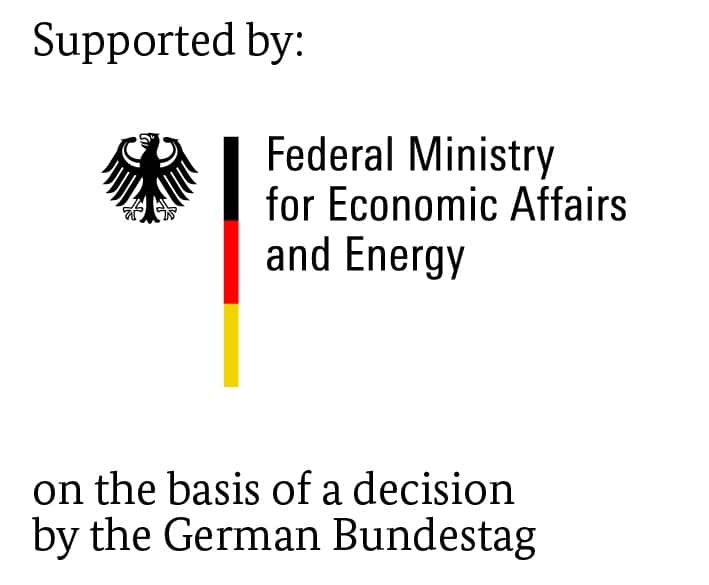The OP 4.1 prototype provides a look at the “operating room of the future.” Get insight into OP 4.1 technology, which enables a sustainable business model that can offer added value to all stakeholders.
Many operating rooms of the present are equipped with the latest medical technology. The various devices and data sources provide large amounts of information needed for a surgery. However, these are often isolated solutions that make manufacturer-independent networking difficult. The surgeon still has to cognitively combine all information during the operation.
The OP 4.1 project aimed to showcase how to connect hospitals with their doctors and nurses, device manufacturers, and independent software vendors by providing the right data at the right time while introducing a solid business platform model for the exchange of information.
This article is part of the series
OP 4.1: The Operating Room of the Future
Despite all the groundbreaking innovations in the healthcare sector, isolated applications are often used. As a result, the full potential is not yet being exploited. The OP 4.1 project developed a prototype of an intelligent platform for the operating room of the future. The funded project is part of the technology program “Smart Service World II,” which is funded by the German Federal Ministry of Economics and Energy (BMWi). In this series, find out how the prototype enables the integration of data, technologies, and different sectors, while at the same time creating the balancing act between networking and solid business models that are the basis for any collaboration.
What Makes OP 4.1 an Integration Platform?
The most important goal is patient health. Through intelligent networking of data, operations can be performed more precisely, and patients can be treated more quickly and gently. A technical operating environment that supports an intervention with different functionalities can make this possible.
To accomplish that requires information — information from the patient file, availability of blood products, results from the laboratory, sensor data from medical devices or even medical imaging from an endoscope. The latter can be combined with CT or MRT images to create a 3D augmentation of the (inward) structures in the surgical area. To get all that information, integration is necessary; for example, medical devices in the operating room.
But what benefits would the OP 4.1 platform prototype offer to healthcare providers such as hospitals, medical device manufacturers, app developers, or startups? What could be the motivation behind the fact that the parties involved are willing to share their data and make integration possible?
- For hospitals, it is the support of surgeries to enable better and safer procedures as well as improve commercial aspects.
- Medical device manufacturers become enabled to infer new business models as well as get detailed insights of the usage of their products in the surgical environment.
- For startups and healthcare app developers, the operating room moves literally to their fingertips when using the OP 4.1 platform as a development environment.
The following example shows the OP 4.1 billing and invoicing feature and provides some technological insights how OP 4.1 integrates different information, leveraging aspects of SAP Business Technology Platform (SAP BTP).
OP 4.1 Technology Insight: Invoicing
The OP 4.1 prototype’s core component is based on SAP Business Technology Platform. Alongside that OP 4.1 cloud integration platform, an on-premise OP 4.1 gateway as interface to medical devices in the operating room exists, which processes the devices’ sensor data and sends it to cloud. The communication between on-premise and cloud is realized using Internet of Things (IoT) components like SAP Edge Services and the corresponding SAP IoT solution.
As central billing component, SAP Subscription Billing is part of OP 4.1. communication throughout the OP 4.1 system and components, especially in terms of SAP BTP. External requests are done with APIs structured, secured, and made accessible with SAP API Management. Orchestration is done by SAP BTP and various OP 4.1-specific components, such as event handlers, business logic, and an invoice engine that generates PDF invoices based on usage and billing data of SAP Subscription Billing.
The following diagram shows and describes the component ensemble and its interactions from using a medical device in the operating room (purple) to invoice creation:
 Partner Onboarding
Partner Onboarding
Onboarding new contributors to the platform is key to create a multi-sided market. But how smoothly and quickly is that possible?
Toward the end of the project, another equipment manufacturer was to be onboarded – truly a proof of concept for the platform. Step one was to connect a new equipment on-premise to the OP 4.1 Gateway via its interfaces like IEEE 11073 Service-Oriented Device Connectivity (SDC) or Patient Care Device Interface (PCD-01). Step two was to configure its digital representation on the OP 4.1 platform and finally uploading device data to SAP IoT in step three before it could be processed by the business logic to result in a new entry on the invoice document.
The conclusion of the project is positive; based on the overall approach of using standardized interfaces and generic data processing, the onboarding concepts of the OP 4.1 platform proved working on both business and technological criteria.
Discharge
In addition to the billing and invoicing feature for medical devices and platform apps shown in the example, the OP 4.1 prototype offers a variety of other functionalities. The platform enables voice command supported tracking of surgery timestamps via the OP 4.1 surgery dashboard and recording of voice notes during surgery. The surgery team, nursing staff, and coordinators can be informed by the platform about the current surgical progress and status for example via mobile notification.
Based on SAP Consent Repository, the OP 4.1 platform presents a digital alternative to the mainly paper based patient consent process. A consent app provides the patient details about the planned surgery, its risks, and consequences. Furthermore, the patient can give, refuse, or withdraw consent for the surgery while all consent records get centrally managed in the consent repository of the platform.
The OP 4.1 prototype gives a taste of an exciting future and the potential that digital platforms offer.


This story was originally published on the SAP Germany News Center.



